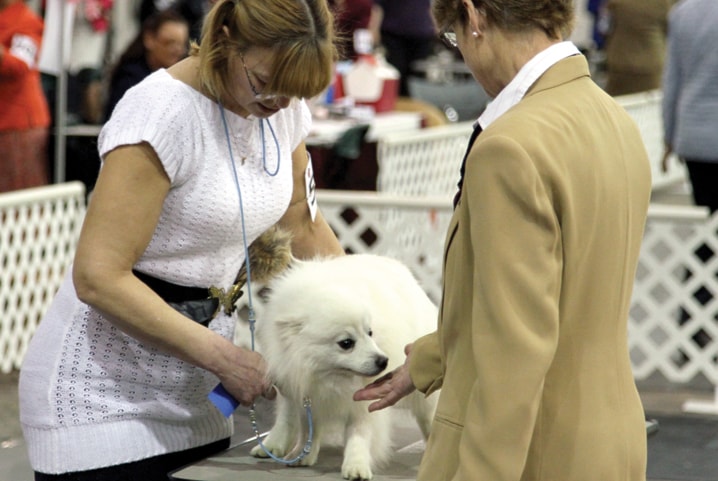To say they have passion might be an understatement for the people who train their dogs daily, drive for hours to attend competitions, and meticulously comb, curl and scrub clean their pooches’ bodies when there — all done for the 2.2 minutes they will then get to spend with their dog in the competition ring.
But if that commitment signifies extreme passion, then dog show judges might just be barking mad with it.
To become a dog show judge requires not only a history in the competitions, but also three to 12 years of study, exams, and apprenticeship before one is deemed ready to separate a first-place dog from the also-rans.
It is a commitment that Jeff Lunder was only too happy to take on. The Delburne man has been in the “dog world” for 40 years and judging for 24.
And as an organizer of the Red Deer & District Kennel Club dog show and obedience trials, he takes judging very seriously.
“We’ll bring judges in from Sweden, Norway, Denmark, Germany; we’ll bring them in from anywhere. The judges that we hire make or break the show. We usually try to hire our judges for five years in advance, because you can’t get good judges if you don’t,” explained Lunder.
He judges obedience, which means when a dog and handler are in the ring together, he is fixated on whether a dog is keeping in perfect step with its owner, how quickly it reacts to commands, and even whether it ever flinches out of shyness or resentment.
He is on a list of about 90 obedience judges across Canada, travelling around North America to judge at about five shows a year.
Honey Anne Glendinning, meanwhile, usually judges a confirmation show twice a month. Judging has taken her around the world, from China to Colombia.
“It’s a hobby that’s turned into an absolute love,” said the Langley, BC woman.
Glendinning had to study for years to become a judge, learning the particulars and history of approximately 200 different breeds.
“You’re learning the reason why the dog was created ... Who sat around and said, ‘I need a dog to do this purpose. How shall it be built? What shall its temperament be?’”
In the ring, she watches not only how a dog behaves, but its colour, bone structure, teeth, girth, shape of the head, and power of the jaw. Her job is to evaluate which canines have the best attributes for each particular breed.
In her 30 years of judging, she has seen plenty of changes, from certain breeds surging in popularity because of movies, the lessening of breeding consistency, and the increase in smaller dogs due to peoples’ housing limitations. But perhaps the greatest change she has seen is in shifting gender patterns, both among humans and their furry friends.
Whereas male dogs often won the day at shows, now females have risen to the top in a number of breeds.
And among the handlers, Glendinning said there is now absolutely no gender prejudice in dog shows, with women far outnumbering men at the Red Deer event.
mfish@www.reddeeradvocate.com
